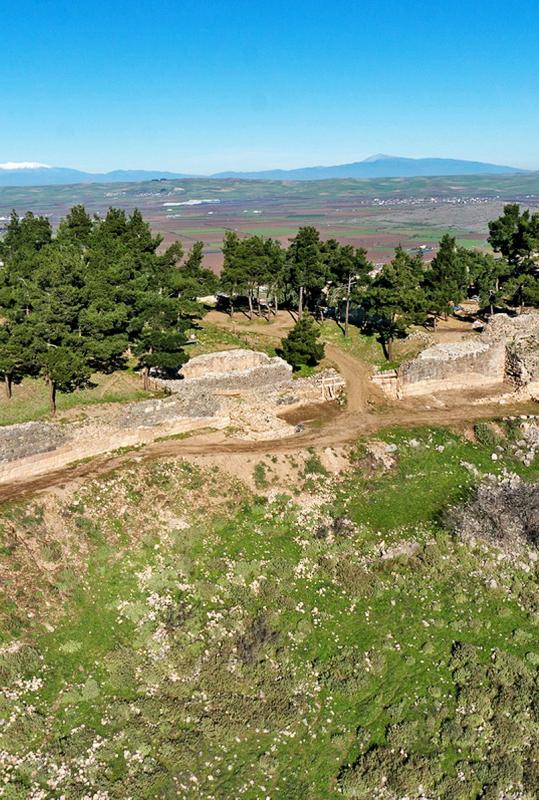Ancient Pharsalos, also known as the city Phthia mentioned in Homer’s Iliad, which sent 50 ships to the Trojan War led by Achilles and his Myrmidons. The city was built in a strategic region, being able to control the roads leading from Northern to Southern Greece. It is said that the daughter of Nereus and wife of Peleus, Thetis, bathed in the waters of its rivers, Enipeus and Apidanus, while its presence over the centuries left a clear mark from the Neolithic period until Roman times.
4. Acropolis of Ancient Pharsalos
Stories
The homeland of Achilles
Verdelis Tomb
A monumental vaulted tomb, excavated in the 1950s by Curator of Antiquities N. Verdelis, stands proudly and recounts to this day the history of the aristocratic family for which it was built in the post-archaic period, while it respectfully reminisces its Mycenaean architectural tradition, maintaining its splendor up until the Hellenistic period.
A rich and powerful city
The construction of the strong walls surrounding ancient Pharsalos, reinforced with towers and gates, commenced in the late 6th century B.C. The city flourished during the 5th and 4th centuries B.C. Visitors to the area can currently see 19 of the 23 total towers that have stood tirelessly along the perimeter of the walls for centuries, and which are part of the few remaining elements of the ancient acropolis, as Byzantine period conversions are mainly being restored. The acropolis gained a new wall during the reign of Emperor Justinian, incorporating certain elements of the older wall, while it continued being used in the post-Byzantine period.
The cave of Pan and Nymphs
Clay idols and two inscriptions at the entrance of a unique cave, tell the story of how Pan met the Nymphs and Apollo each time the faithful deposited their offerings and gifts along with their hopes upon entering, from the 6th until the 4th century B.C. According to one inscription, one of them, Pantalkes, shaped the cave in the early 5th century, creating access roots and planting a small grove dedicated to the Nymphs.
Powered by Clio Muse Tours
